Dunmurry
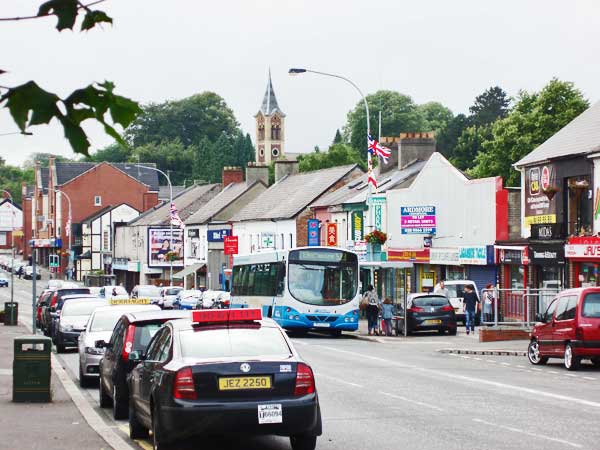
It may be the time of year (July/August 2013), but if there's one thing to be said about Dunmurry, it's in your face.
Not one flag, but two, on every lamp-post in the main street and even up some of the side streets.
Not one flag, but two, on every lamp-post in the main street and even up some of the side streets.

The top one, the union jack, reminds you that Northern Ireland is part of the United Kingdom, since 1801 in fact. It should be added that the Loyalists/Unionists are not loyal to the UK Government but to the monarch.
Dr. Paisley always made a point of that. Particularly at such times as the UK Government looked like it might abandon the Unionists to their fate in a united Ireland.
And they are a careful lot. I didn't see a single union jack flying upside down. Dr. Paisley used to make an issue of that when he saw it happen in Britain. It reassured him that his crowd were always the right way up and therefore, by implication, more loyal than the crowd on the bigger island.
Dr. Paisley always made a point of that. Particularly at such times as the UK Government looked like it might abandon the Unionists to their fate in a united Ireland.
And they are a careful lot. I didn't see a single union jack flying upside down. Dr. Paisley used to make an issue of that when he saw it happen in Britain. It reassured him that his crowd were always the right way up and therefore, by implication, more loyal than the crowd on the bigger island.
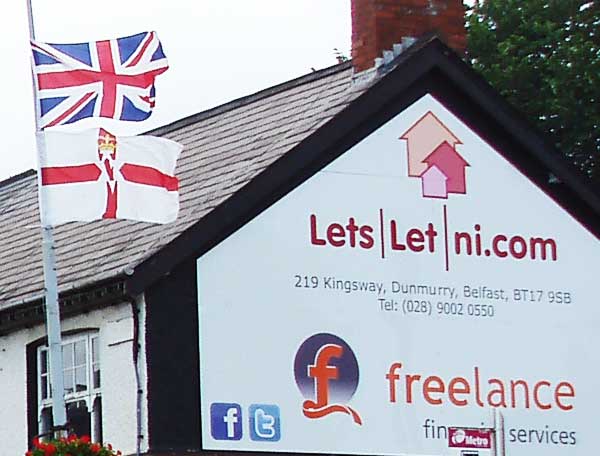
The bottom flag is the "Ulster Banner". Strictly speaking, it is the flag of the Northern Ireland Government from 1953 to 1972 when it became obsolete with the advent of direct rule. While it no longer has any official status it is still used by some loyalist communities, like the one in Dunmurry. The problem with calling it the Ulster Banner is that there are three counties of the province of Ulster which belong to the South. So, Ulster in this case needs a bit of leeway in its interpretation.
It's a sort of a legacy from the pre-partition days - Ulster will fight and Ulster will be right, and all that sort of stuff.
I remember, when I was dealing with the EU Peace Programme, welcoming colleagues from the South and from Northern Ireland to Ulster, to a meeting in Ballybofey in County Donegal. The Southerners didn't bat an eylid, the Northerner Ireland Unionists did a double take and thought I was off my head, until the penny dropped.
It's a sort of a legacy from the pre-partition days - Ulster will fight and Ulster will be right, and all that sort of stuff.
I remember, when I was dealing with the EU Peace Programme, welcoming colleagues from the South and from Northern Ireland to Ulster, to a meeting in Ballybofey in County Donegal. The Southerners didn't bat an eylid, the Northerner Ireland Unionists did a double take and thought I was off my head, until the penny dropped.
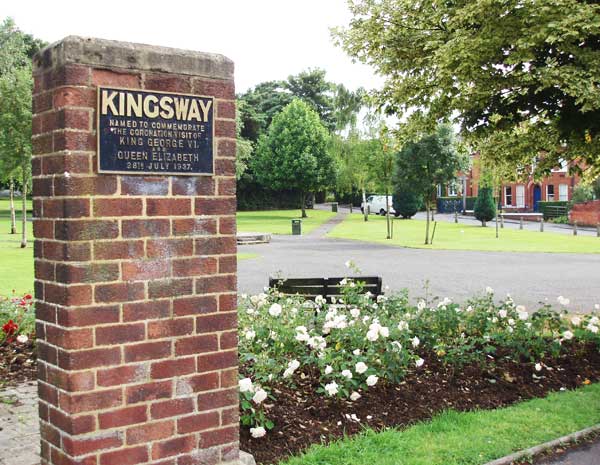
Kingsway is the main street and as you can see the park is well kept.
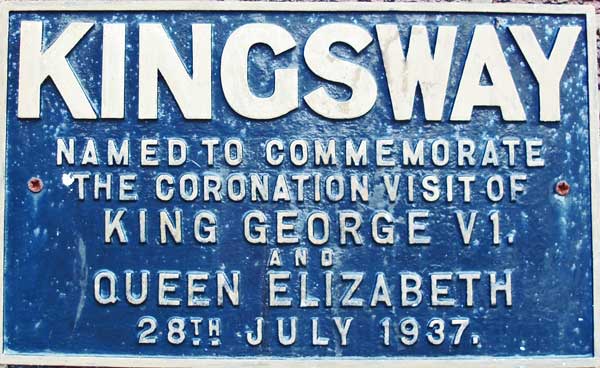
The dedication, though, will remind you very quickly that you are not in a Republican area here.
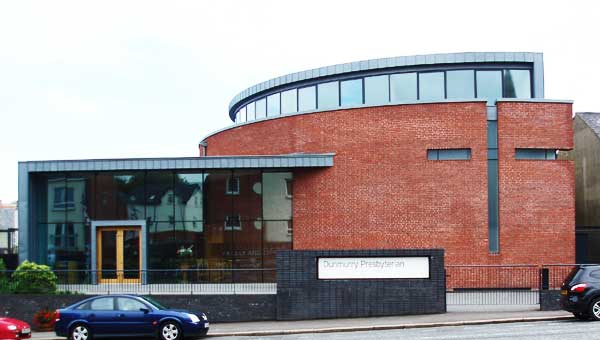
In addition to that nice steeple in the picture of the main street, at the top of the page, which I assume is the Anglican church, the main street itself boasts two further churches. This modern spacious structure, above, is the Presbyterian church.
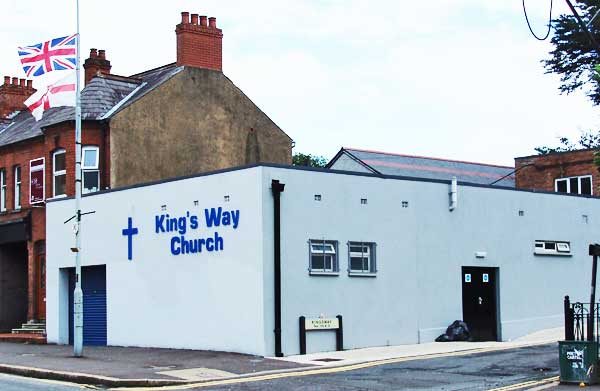
And on what appears to be a much more modest scale and presentation, the Kingsway church. Don't know who they are, but certainly not RC.
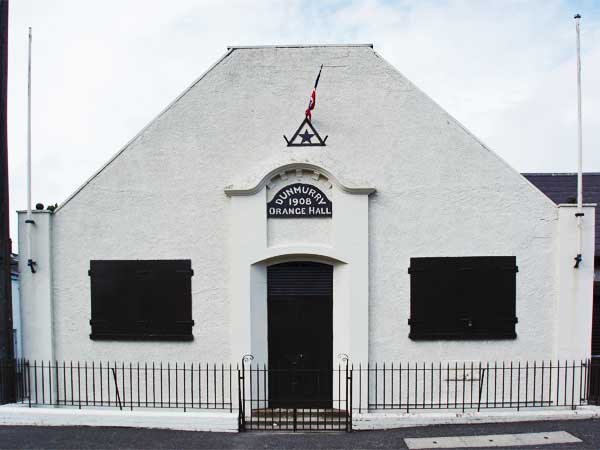
And, of course, no town in Northern Ireland would be complete without its Orange Hall.
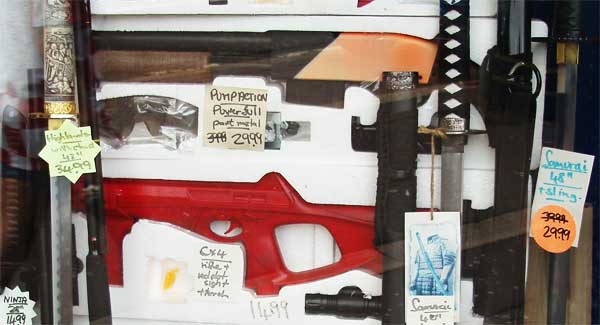
I came across the weapons above and below all in the one shop window. I don't know what's for real and what is replica, and I'm not sure if the prices quoted are for purchase or overnight hire. There are certainly some nasty looking pieces, and why people would want Samurai swords, Nazi knives and crossbows is beyond me.
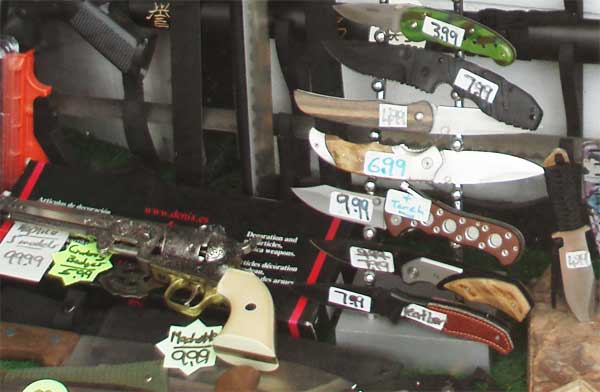
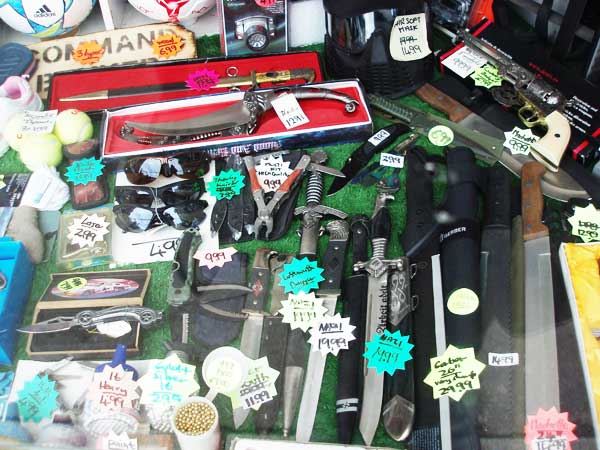
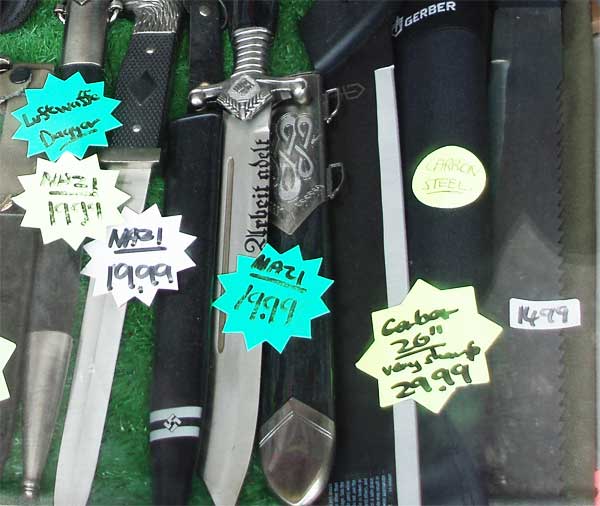
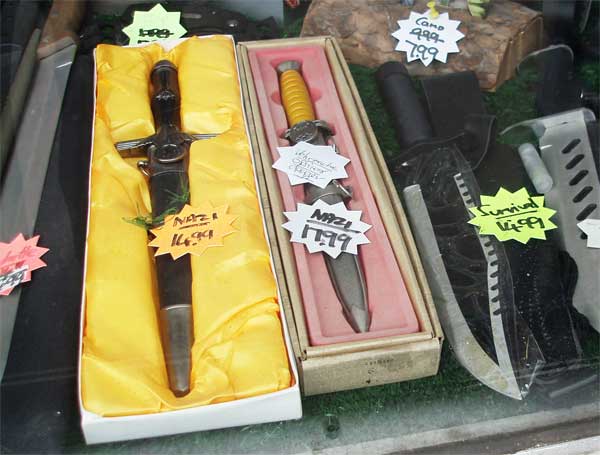
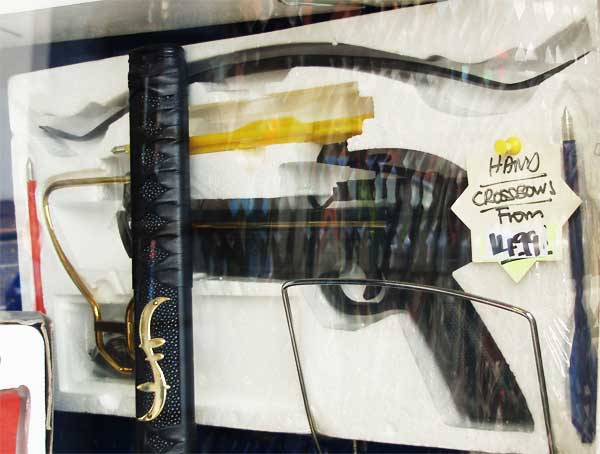
In any event, I was glad they were in the window and not in the hands of passers by.

I was really getting so confused that I wondered whether this design in the footpath was some sort of Protestant version of a St. Bridget's cross, or a secret Masonic sign, or just an entry for the Texaco art competition.
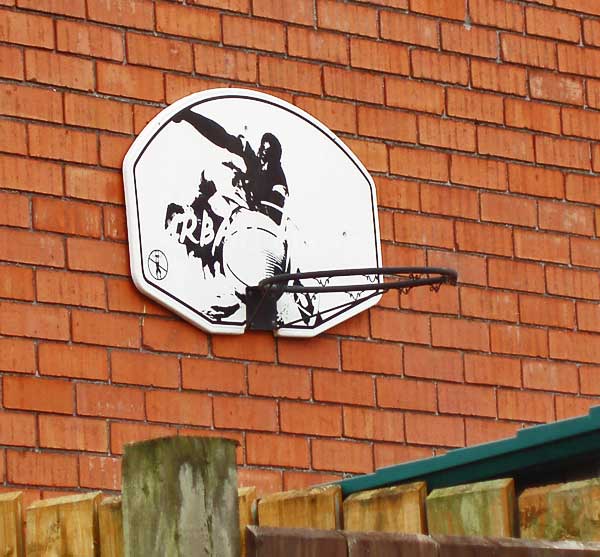
So jumpy was I by now, that I assumed this thing on the gable end of a house was sectarian. It looked very like the IRA sniper stuff and I wondered was this the Loyalis equivalent. On closer inspection, however, it seems to have started life as an innocent RBA logo and just acquired its sectarian overtones as a result of weathering.
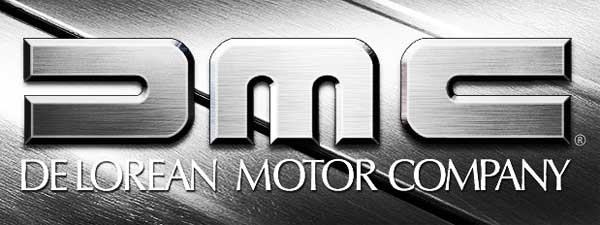
I subsequently read that Deiorean cars were made here. I remember John Deiorean well. Turned down by the IDA in the South, he went north and got a whack of grants up here. I gathered the whole thing collapsed fairly quickly.
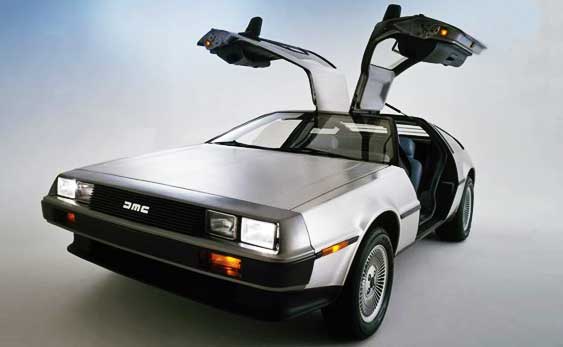
But imagine my surprise to find the DMC are still operating as a sales organisation and flogging new and secondhand versions of the gull winged car. That's a real back to the future for you.
A colleague tells me that the Delorean trademark is now owned by a car dealer in Texas. He will build and sell you a Delorean to order, using old stock parts from the original factory, a hodgepodge of new parts, and body panels fabricated by hand.
A colleague tells me that the Delorean trademark is now owned by a car dealer in Texas. He will build and sell you a Delorean to order, using old stock parts from the original factory, a hodgepodge of new parts, and body panels fabricated by hand.
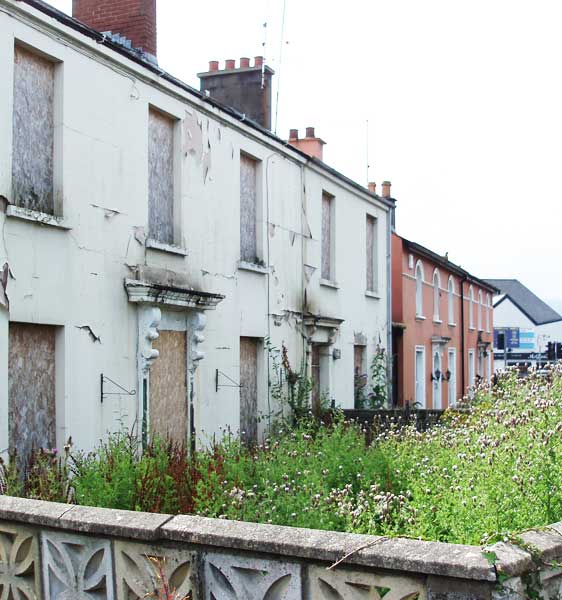
Whatever about the town's past, the signs of dereliction are pretty obvious. Dunmurry is not unique in this. I saw a lot of it in Newry earlier and, of course, Dublin is now fast catching up with the half shut down, gap in the teeth look. The site above consists of the boarded up houses and other land, amounting to over an acre in all, which is up for sale, without, I suspect, much prospect of selling in the near future.
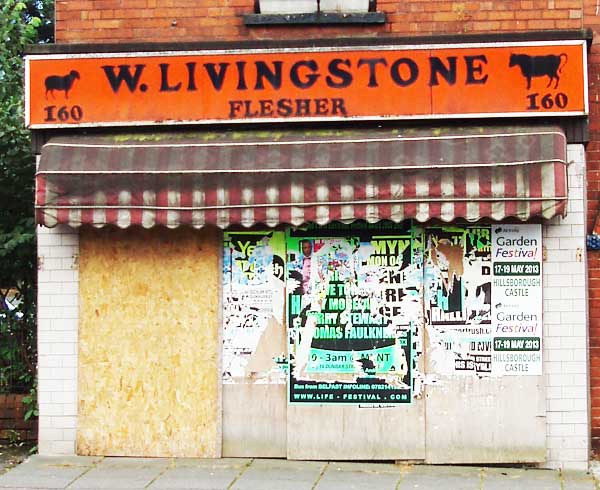
There are also premises closed along the main street, the Flesher above being one. Never heard of a flesher before. Wictionary tells me it is someone who separates flesh from skin in the making of leather. I suspect that this one was a plain and straightforward butcher and that the word is derived from fleischer (the German for butcher). Anyway, he's had it, by the looks of things.
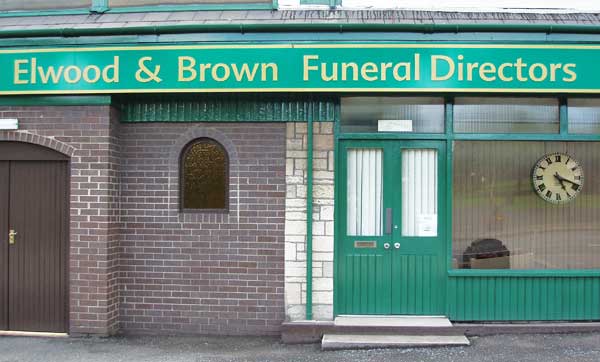
Undertaking, however is one of the trades that will remain as long as the people do.
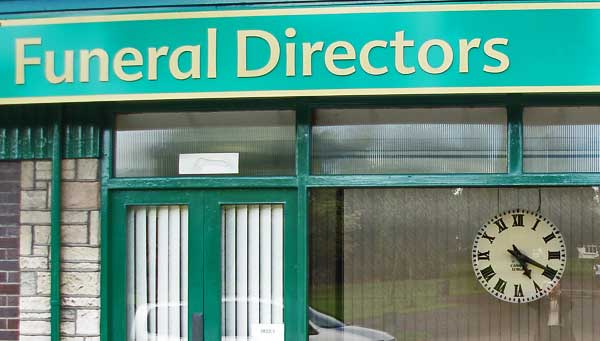
I was particularly taken with this guy's ancient clock in the window. It seemed to be ticking away the seconds and gave the impression of being carefully watched by both the prospective corpse and the Grim Reaper. Or was I just getting hyper by this stage.
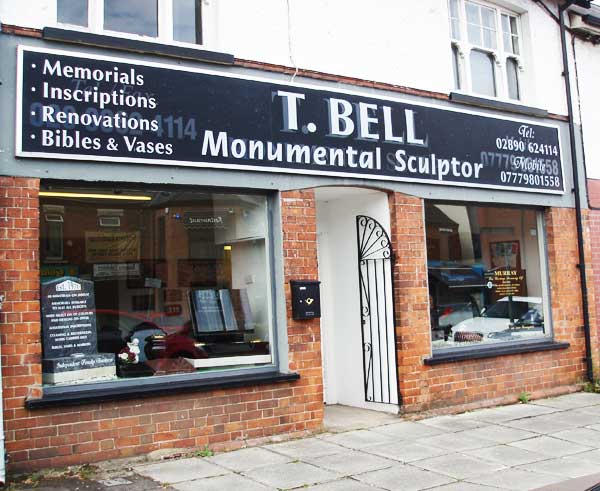
On to the next stage then, and the memorials man. One for every occasion but particularly for when you're dead.
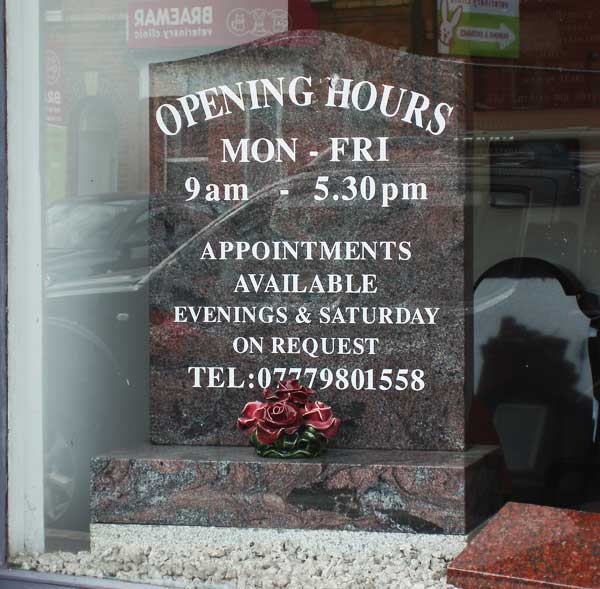
I was tickled by his confidence in putting up his hours of business in stone. No prospect of short time working here!
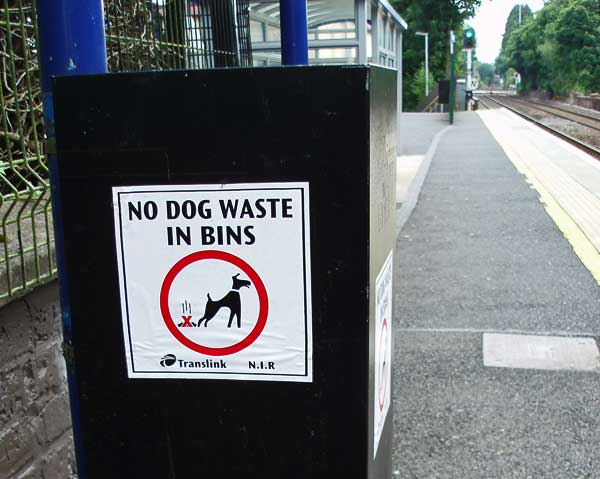
And finally I got a hint of what people here do while they are waiting for the train.
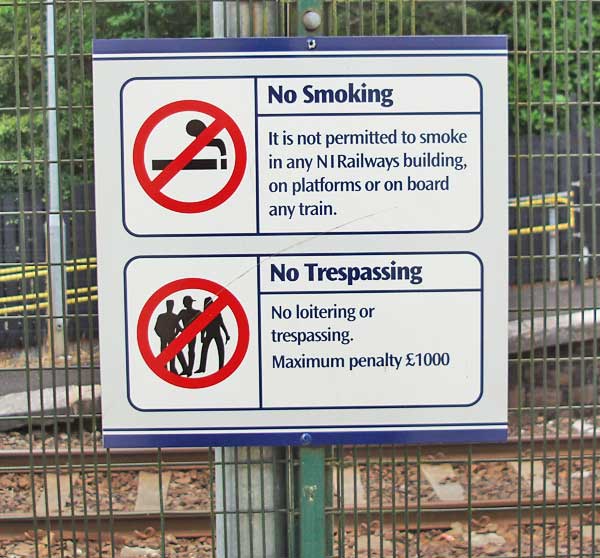
And it could have been a most expensive discovery as I had wandered onto the platform without any ticket, and was not only loitering, but loitering with intent, camera in hand.